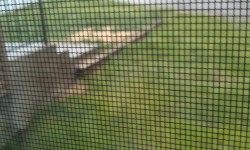This past weekend I participated in a graduation/mastermind gathering with my EFT (Emotional Freedom Technique or “tapping”) teacher Carol Look and my fellow new Abundance Coaches. I was worried about the setting ahead of time, a busy city environment with rushing traffic, exhaust, and many hurrying people. I was afraid I would be overwhelmed with incessant chatter and other chaotic energy, so have difficulty focusing on the teacher and taking in the lessons.
I recognize this dynamic from my vision practice, and from observing my own habits and temperament. Of course I want to let in useful or interesting information, yet keep out the input which feels toxic to me, like an angry rant or smelly too-strong aftershave or auto exhaust. I want to keep my channels open without getting overwhelmed.
Here is an example when my channels were wide open, in a workshop with my energy medicine teacher Deborah King, and it didn’t go well for me.
With regard to vision, I believe that when we’re born, barring any rare physical eye problems, our visual channel is in full receiving mode. We’re taking in all the input presented, learning to make sense of it. (The same is true of our auditory channel, and the other ways we receive data from our environment.) We don’t screen the input — we just accept it as it is, clear and unfiltered.
Then for those unfortunate ones among us who develop vision difficulties, we start to want to block some of the incoming visual data. Maybe it’s too scary, or too confusing. Dad smiles at us some of the time and other times is angry. So we blur out Dad’s face, or “look” with our eyes open but tell ourselves not to see! Dad’s face is still as clear as before out in the world, but in our brain it’s becoming more comfortably blurry.
As a child we didn’t have a choice whether or not to look at Dad. Or if we developed vision restriction during our school years, we didn’t have a choice whether to look at the blackboard or at the fact that our best friend was moving away, but it felt better not to see it too clearly. If we really tuned into the troubling sight or event, that might hurt too much, or we’d feel inadequate.
So now we’re adults, and realize with our logical brains that this self-sabotaging behavior of limiting our vision is not a good coping strategy any longer. When I started actively focusing on this for myself, the first place I went was anxiety reduction. I needed to help myself feel safe, and to know that I can handle whatever comes up on my own, or get help if I need it. I am no longer that nervous powerless child with no coping strategies except to blur out the world.
I’ve written before about anxiety-reduction practices like meditation or exercise or EFT (Emotional Freedom Technique or “tapping”) or time in Nature away from your electronics or Bates techniques like palming. Different practices work for different people, so it’s best to have several techniques to pick from and use the one which suits your needs best at the time. I do urge you to do something to lower your emotional stress, not just ignore it. Your body is sending you a message that it feels out of balance and needs your help to correct that.
Once I lowered my level of anxiety (which is still an ongoing practice for me, by the way), I felt strong and steady and empowered. I knew it was totally my choice what to let in and what to keep out of my space, and I could do this for myself. It’s the same as moving away from a grumpy negative person at a gathering toward someone with a warm friendly smile.
To take care of my health and my attitude, physical and emotional and visual, I need to practice awareness and discernment, which my energy medicine teacher Deborah King often discusses. This is not a complex process. It’s as simple as the little and big moment by moment decisions of “Is this good for me right now?”. Often when we were younger our parents or caretakers or teachers presented us with an experience which didn’t feel good at all, no matter how well-meaning they might have been. Now as adults we’re in control. We can let in the sensory data and information, or decide not to and walk away. We don’t have to strain to push it away or resist it or blur it out.
My intention is clear sight, and it is my choice where and how to look. I can close my visual channel if I want to — most of the time I keep it wide open because I so love to see!
get help on our Facebook Group!

I wore strong glasses, then contact lenses, from age 5 into my 40s. While making many mistakes, eventually l learned how to improve the way I use my eyes and to see in a more relaxed, healthy manner. It is my pleasure to coach others to do the same. Visit me at https://NancyLNeff.com.

What an eye opener this post was for me! Now to get to the bottom of why I still don’t want to see some things! Or maybe the key is learning how to stay with the discomfort as in meditation?
Gwen, thanks so much for reading, and for thinking about this with regard to your own vision. I believe in meditation, an also in journalling afterwards on what surfaces. Have fun learning!